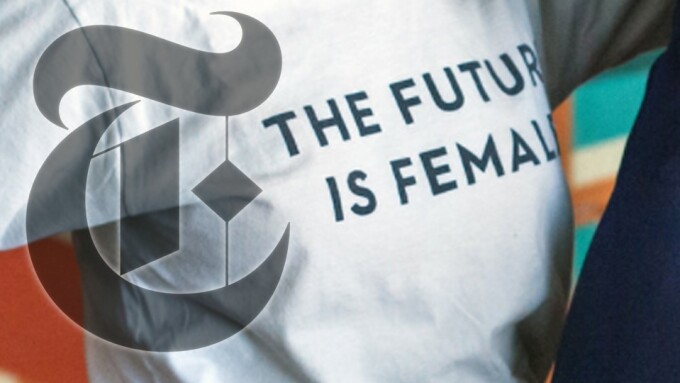LOS ANGELES — Regardless of which coast you live on, or wherever in between, a new generation of sex toys and sex toy designers are transforming the way we think about personal pleasure.
Noting that “New York is becoming a cultural center for young women trying to disrupt the male-dominated industries of design engineering and sex toys,” a recent article in the New York Times by author Anna North, entitled, “Women of Sex Tech, Unite,” points to today’s top trend in tactile tech — the girls are taking over.
The in-depth article provides a range of examples of female sex tech innovation and leadership in N.Y., including glimpses at engineer Janet Lieberman, who with Alexandra Fine, co-founded Dame Products and designed two vibes while reportedly becoming the first company to fund a sex toy via Kickstarter.
Also in the spotlight is N.Y.-based Women of Sex Tech, a group with more than 70 members spanning from California to China and beyond — members of whom participated in the SexTech Hackathon held earlier this year in N.Y., and other events.
Women of Sex Tech member and founder of MakeLoveNotPorn, Cindy Gallop, says sex tech is “designed to enhance, innovate and disrupt in every area of human sexuality and human sexual experience.”
“Silicon Valley welcomes innovation and disruption in literally every other area except this one,” said Gallop. “While there is a sex tech scene in California, so far it lacks a unifying force [like Women of Sex Tech].”
The article cites Lioness CEO Liz Klinger who explains that “investors and others in the New York business community are more comfortable with consumer products than their counterparts in Silicon Valley, who tend to focus on business-to-business companies.” Her company makes a vibrator that “collects data on women’s sexual responses.”
The story cites an Unbound report revealing 70 percent of sex product companies are run by men, but claims women, “many of them millennials, are starting to harness their economic and social power to disrupt the industry, both on the business and on the consumer side.”
“New York as the cultural center of this movement makes a lot of sense,” North wrote. “It has been the home to a Broadway show and well-known episodes of television series made in the city that have unabashedly explored vibrators and other female-friendly sex accessories.”
Still, it’s not all shiny for sex toys in the Big Apple and beyond, with social stigmas and male domination of venture capital and business services adding stumbling blocks for female execs who struggle to be taken seriously as they push the boundaries of sexual technology today.
To read the full article, click here.








